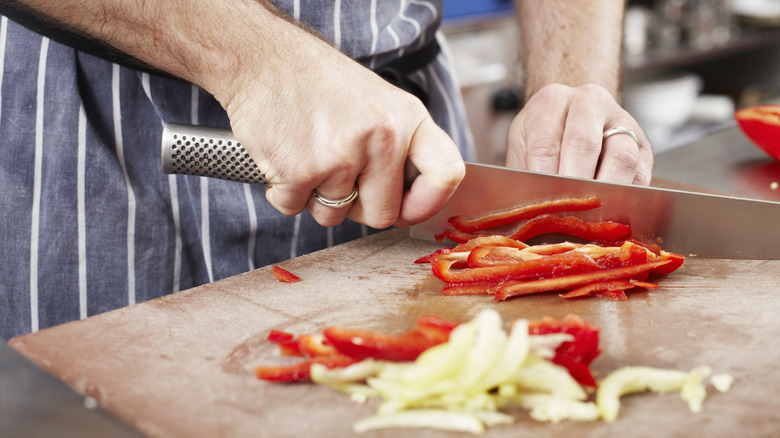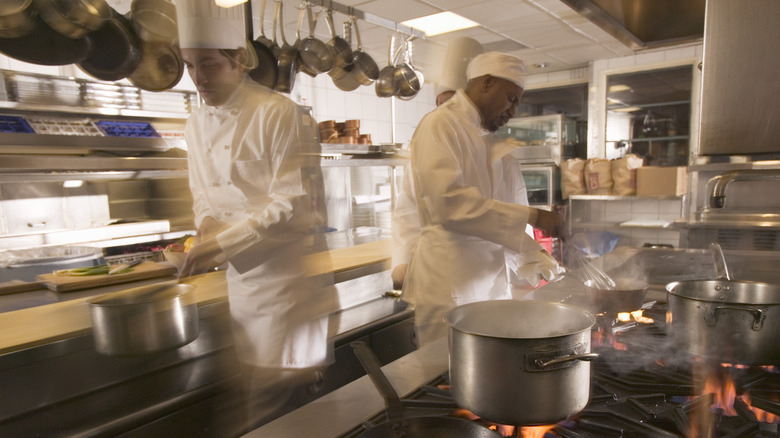Report Finds 30% Of Restaurants Use Cheaper Ingredients To Combat Inflation
Despite incurring the worst inflation rates in 40 years, restaurants are starting to see sales in the pre-pandemic range again. On paper, it sounds like good news, right? Not exactly. Due to inflation, GO Banking Rates says those numbers are worth less than they used to be — a lot less. Labor costs in 2022 were 15% higher on average than in 2021, and even wholesale food is 17% more expensive. Not to mention, the prices of cooking fuel, paper bags, and rent, have also gone up. Inflation has not only raised operating costs but has also slowed customer foot traffic, as consumers have less disposable income. Combined with a tight labor market, COVID-related supply chain issues, shortages due to the Russia-Ukraine conflict, and climate-change-induced crop destruction, it's not looking awesome for a lot of restaurants right now.
In November of 2022, the U.S. Small Business Association provided $83 million to help struggling restaurants. But, it was essentially a band-aid for restauranteurs navigating a continuously treacherous economic landscape. According to the U.S. Bureau of Labor Statistics' Consumer Price Index Report for December 2022, the "all items index" increased by 6.5% compared to the year before. Food and housing costs rose in November, and then again in December. James Watts, CEO of Own The Grill, tells The Food Institute, "No one can afford to work in restaurants, and no one can afford to eat in restaurants." So, what are restaurant owners to do? Here's the new way many folks are combating inflation.
Keeping costs low for both restaurants and customers
Food service industry point-of-sale system Toast recently published its Restaurant Industry Outlook Report for 2023. The findings show that to help offset the heavy financial hit from inflation, 30% of full- and quick-service restaurants are switching out their tried-and-true ingredients for lower-cost products. So maybe your favorite burger spot won't serve truffle fries anymore, but those more affordable garlic butter fries will still do just fine, thanks.
Some customers might criticize businesses for "cutting corners" on certain ingredients or violating customer expectations regarding quality, but, in times of need, it's a lever a restaurant must sometimes pull to control what costs it can. And these thrifty efforts may not mean just survival — they can also spur innovation, like the way steak tartare originated.
And according to the reservation platform OpenTable, 50% of consumers are already looking for cheaper restaurants. To stay above water, 36% of restaurants have raised their prices to offset higher operating costs, according to Toast's new report. But, Bob Vergidis, chief visionary officer for pointofsale.cloud, says inflation has made consumers choosier with their money, and simply passing off the costs isn't going to work in the long run. Vergidis advises in GO Banking Rates that "Businesses should be extremely strategic during this time [and] lower the total cost to the consumer by reducing costs as much as possible." If it's lower prices that foodies are looking for, one can't blame restaurants too much for reimagining the recipe a bit.

